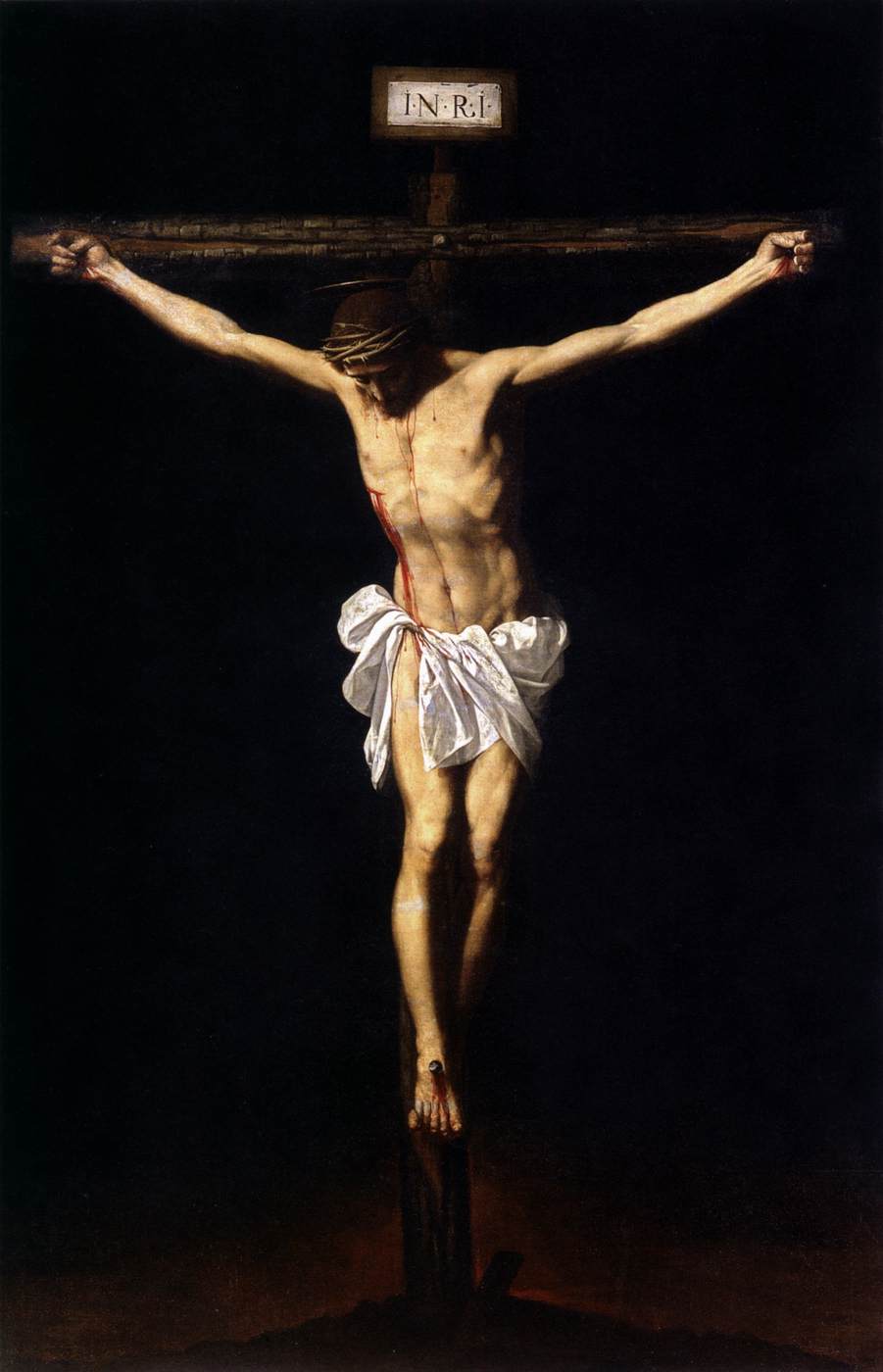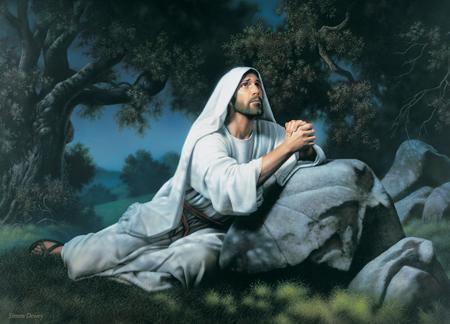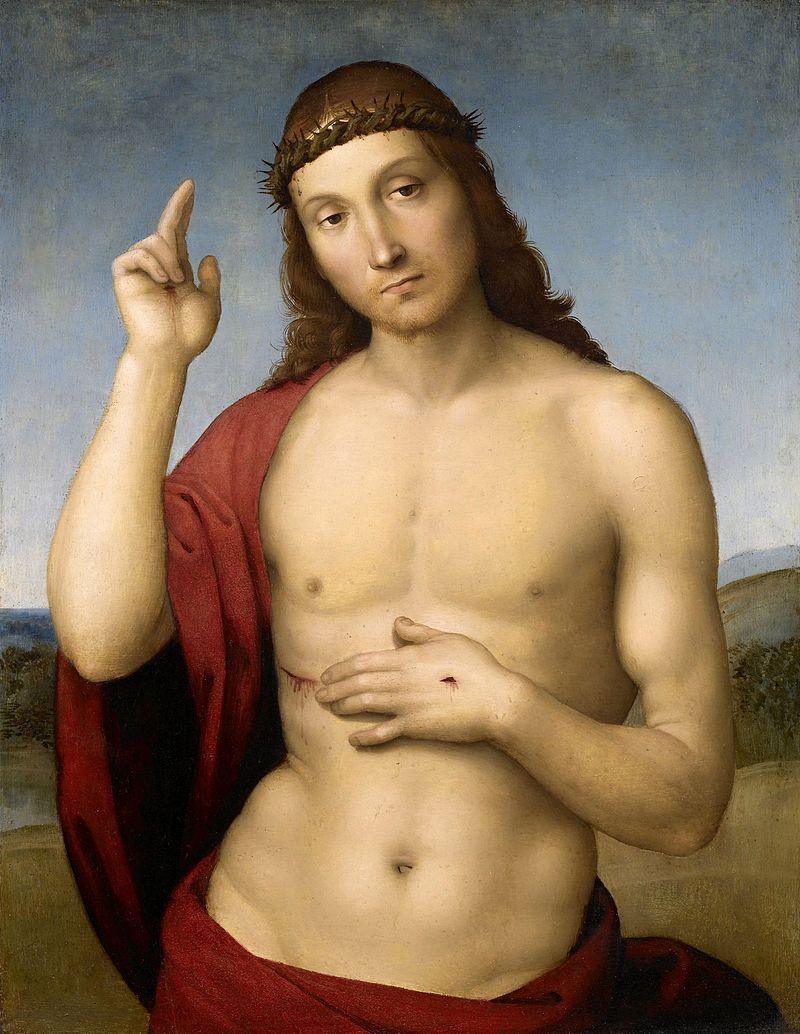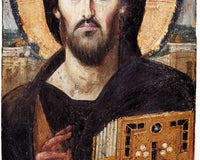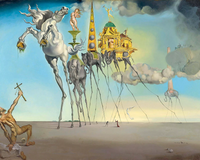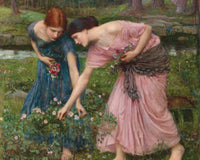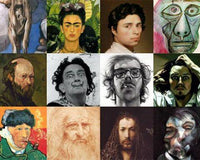The Paintings of Van Gogh Tell the Artist
Vincent van Gogh may be the most famous artist in the world.
His pen and creative genius have inspired many, despite being perceived in history as the 'mad' artist, the man who painted with frenzy or simply the soul who, in a sharp moment of suffering, cut off his own ear.
His artistic genius has often been overshadowed by the visual manifestations of his tormented mind. But while his mental health undeniably influenced his art, in reality, his innovative and artistic style was of immense importance to a large number of artists who followed him.
Even when he was openly influenced by his predecessors or contemporaries, his art remained solely his own, developing a distinctive style in his paintings that unfortunately was not accepted by the contemporary public of his time.
The Paintings of Van Gogh from the Early Years
Although the artist's first formal work after leaving school was also related to art, he did not begin to paint seriously until many years later.
At 16, Vincent van Gogh became an apprentice at his uncle's art dealership in Paris.
Working with his relative would expose him to the artistic environment, but he would first dedicate himself to religious work, and even, for a brief period, he also worked as a bookseller before creating his first painting.
His earliest works, completed between 1881 and 1883, reflect the attention to detail characteristic of a novice, but they also show the first signs of the emerging genius that would fully emerge in his later paintings.
Although his sketches and watercolors may, at first glance, seem two-dimensional and amateurish, his initial studies on realism already begin to be fascinating during this period.
"What is done with love is done well."
First Drawings of Van Gogh
Vincent van Gogh created his first drawings while staying at his parents' house in Etten, in the Netherlands, where he mainly educated himself on anatomy, perspective, and artistic technique. The artist restricted his early sketches to a black and white palette, believing that mastering this discipline was essential before attempting any work in color.
His first drawings depict several peasants in static poses, some in profile, while his main landscapes are largely studies in perspective. In his early pen and watercolor drawings, Vincent incorporated shadows and lights instead of colors to create dimension. Drawing on the strong influences of masters like Millet, Rembrandt, and Daumier, the artist's focus on the human figure was fundamental to his burgeoning artistic development.
In mid-1881, Vincent van Gogh participated in a brief period of study with Anton Mauve, a teacher at the School of Art in The Hague.
Mauve not only covered his basic knowledge needs but also introduced his student to watercolors and oils, thus expanding the artist's field of expression.

The painting Still Life with Cabbage and Clogs, one of his early works, uses the somber earthy tones that characterize his early Dutch-style works. It also presents a rich touch of color, a foretaste of the brilliant painting style to come.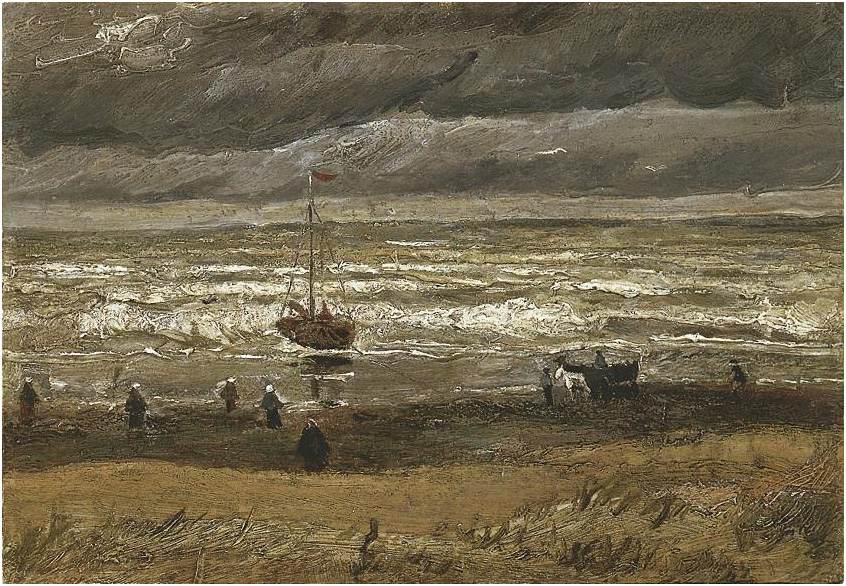 View of the Sea at Scheveningen, one of Vincent van Gogh's early incursions into landscape (a genre he would maintain interest in throughout his career) was completed in August 1882. The painting represents an active view of the beach near The Hague.
View of the Sea at Scheveningen, one of Vincent van Gogh's early incursions into landscape (a genre he would maintain interest in throughout his career) was completed in August 1882. The painting represents an active view of the beach near The Hague.
The realism of the scene in this painting is evidenced even in the canvas itself, with grains of sand from the storm still embedded in the oils to this day.
The work displays elements of the Impressionist art school with its indistinct but mobile figures in the foreground. The painting is completed with broken brushstrokes suggesting turbulent waves, marked above by dark forms, suggesting the clouds of a storm.
Paintings of Van Gogh in The Hague Period
Vincent van Gogh's residency in The Hague during 1882 and 1883 proved to be a productive period in which he continued to perfect his technique and explore similar but new themes. During this time, Van Gogh received his first commissions for drawings of urban landscapes in The Hague from another uncle who was also an art dealer. The landscape painting Bulb Fields testifies to the artist's awakening to the expressive use of light and color so prominent in his later work. In the foreground of the painting, hyacinths in white, blue, pink, and golden tones fill the fields of a beautiful garden leading the gaze toward a distant hillside and a sky filled with white clouds. Various shaded houses with thatched roofs frame the scene as a gardener walks among boxes in the distance.
The landscape painting Bulb Fields testifies to the artist's awakening to the expressive use of light and color so prominent in his later work. In the foreground of the painting, hyacinths in white, blue, pink, and golden tones fill the fields of a beautiful garden leading the gaze toward a distant hillside and a sky filled with white clouds. Various shaded houses with thatched roofs frame the scene as a gardener walks among boxes in the distance.
Paintings of Van Gogh in the Intermediate Years: 1884-1887
During this era, a failed love story, the death of his father, and a brief period of study at the Academy of Antwerp formed a bleak backdrop for the ongoing development of the artist.
During a stay in the northern village of Nuenen from late 1883 to 1885, the painter focused on agrarian scenes of peasants working the land as well as weavers practicing their craft.
In 1885, the artist produced The Potato Eaters, a work that many consider his first masterpiece.

In this depiction of a peasant family sitting around their humble table, Vincent van Gogh invokes the influence of Rembrandt by virtue of a somber environment that is, however, full of personality and life. A plate full of potatoes illustrates the simple wealth of those who make a living from the land. The friendly atmosphere, lit by the warm glow of a lamp, inspires in the viewer a longing to partake in this intimate scene.
Paintings of Van Gogh in Paris
In 1886, Vincent van Gogh attended art classes at the Academy of Antwerp but only stayed part of the year. After moving in with his brother, Theo, in Paris, Vincent studied with the artist Cormon and came into contact with his fellow students Henri de Toulouse-Lautrec, John Russell, and Emile Bernard.
Theo, an art dealer, introduced his brother to the works of prominent Impressionist painters like Claude Monet, Pierre-Auguste Renoir, and Georges Seurat, all of whom had a strong influence on the artist's future paintings.
Vincent was able to meet and became friends with the artist Paul Gauguin during this same period, and Gauguin's bright-colored paintings also had a strong influence on the Dutch artist's prodigious art.
In 1887, Vincent van Gogh experimented with the pointillist technique of George Seurat, which he used in works such as a Sunday Afternoon on the Island of La Grande Jatte.
In one of his many self-portraits, Self-Portrait with Gray Felt Hat, Vincent uses small dots of color that reflect the light to reveal a man of sharp features with the expression of weariness from someone who seems to have seen more than he can bear.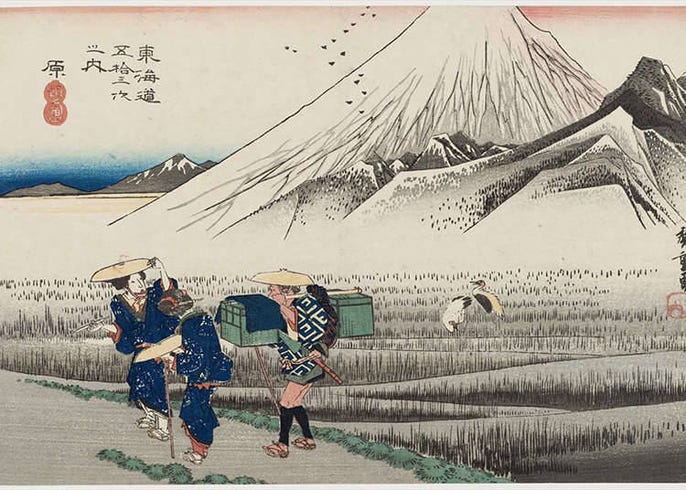 It was during this time in his life that the artist began to take an interest in Ukiyo-e, a genre of prints made via woodblock printing, produced in Japan from the 17th to the 20th centuries, which include landscape, theater, and nightlife images.
It was during this time in his life that the artist began to take an interest in Ukiyo-e, a genre of prints made via woodblock printing, produced in Japan from the 17th to the 20th centuries, which include landscape, theater, and nightlife images.
He and other contemporaries like Claude Monet and Edgar Degas began to collect them, with these works inspiring paintings that reflect the influence of Japonaiserie in his technique and artistic vision.

The replica of Van Gogh's The Courtesan, an original work by the artist Keisai Eisen, features a blend of bright colors that far surpass the original. He chose a background of a pond of water lilies instead of Eisen's cherry blossoms.
Paintings of Van Gogh in the Later Period

Vincent van Gogh moved from Theo's house in Paris to Arles, in the south of France, in 1888, where he rented his famous Yellow House.
In the spring, the artist painted the blooming landscapes of Provence, as well as the coastal landscapes in nearby Saintes-Marie-de-la-Mer. During this productive period in his life, the artist also created a series of portraits, including his series of paintings depicting the Roulin family.

While preparing a room in his Yellow House to accommodate Gauguin, who planned to visit Arles for a prolonged stay later in the year, Vincent van Gogh was also working on his second series of Sunflower paintings.
He had created the first series while he was with his brother in Paris. The artist's sunflower paintings featured various backgrounds and arrangements of the large golden flowers, each similar but distinct. Art experts especially appreciate these works for their innovative expansion of the yellow color spectrum. Others appreciate the paintings for their unique combination of simplicity and richly evocative details.
Although Gauguin's visit was highly anticipated by Vincent van Gogh, his arrival at the Yellow House in October 1888 did not go as planned.
At first, both artists enjoyed a productive period together in their careers, but disagreements and discussions tarnished the productive tone of their young partnership. Tensions between the two culminated in late December when Vincent allegedly attacked his colleague with a razor blade and ended up cutting off part of his own ear.
The syphilis disease was beginning to reveal itself: he started to hallucinate and would suffer from attacks in which he frequently lost consciousness.
Still, Van Gogh later claimed to remember nothing about the fateful event with the razor.
After losing his ear, Vincent van Gogh spent the following days in the hospital in Arles. In general, it is assumed that Vincent Van Gogh had syphilis because approximately 10% of all European men carried the disease by the end of the 19th century. It is believed that Van Gogh contracted syphilis as he frequented brothels and exhibited erratic behavior. According to some historians, at this time, Van Gogh showed terrible sores in his mouth and lost much weight because he could not eat.
Unlike gonorrhea, which he also suffered from, syphilis drove him mad in its late stage, called neurosyphilis. Perhaps one of the decisive factors in his suicide was that the artist feared developing the final symptoms of the disease.
Although he struggled with a rapid mental decline, Van Gogh produced a series of stylistically diverse paintings that represented the hospital itself and the olives and cypress trees of the grounds surrounding the institution. Vincent van Gogh painted his brilliant work of 1889, Irises, in the garden of Saint-Remy during his stay at that place of confinement.
Vincent van Gogh painted his brilliant work of 1889, Irises, in the garden of Saint-Remy during his stay at that place of confinement.
The painting, which exhibits some characteristics of Japanese woodblock prints, as well as the artist's inclination towards color and light, was part of the annual Societe des Artistes Independents exhibition in Paris, thanks to Theo's intervention, along with Starry Night over the Rhone.

Van Gogh, a Prolific Artist
Between November 1881 and July 1890, Vincent van Gogh painted nearly 900 paintings, a very prolific output for any era.
Since his death, Van Gogh has become one of the most famous painters in the world. His paintings have captured the minds and turned the hearts of millions of art lovers.
“There are two ways to think about painting, how not to do it and how to do it: how to do it - with much drawing and little color; how not to do it, with much color and little drawing.”
Van Gogh firmly believed that to be a great painter one must master drawing before adding color. Over the years, the artist clearly mastered drawing and began to use more color. Over time, one of the most recognizable aspects of Van Gogh's paintings became his bold use of color. This characteristic is evident in both landscapes and still lifes.
About a year before his death, Van Gogh predicted that there would be a great “painter of the future” who would know how to use color like no one else and become the future of painting. He expressed this in a letter to his brother Theo in May 1888,
“As for me, I will continue to work, and here and there something of my work will turn out to be of lasting value, but who will be able to achieve in figure painting what Claude Monet has accomplished in landscape? However, you must feel, as I do, that someone like that is on the way, Rodin? - doesn’t use color - it won’t be him. But the painter of the future will be a colorist like never seen before.”
During his life, Van Gogh was never famous as a painter and struggled to make a living as an artist.
Van Gogh only sold one painting during his life, The Red Vineyard. This painting sold in Brussels for 400 francs just a few months before his death.
About a week after his passing, Van Gogh's brother, Theo, wrote to his sister Elizabeth about Van Gogh's legacy as a great artist:
“In the last letter he wrote to me, dated about four days before his death, he says: ‘I try to do it as well as certain painters I have loved and admired very much.’ People should realize that he was a great artist, something that often coincides with being a great human being. Over time, this will surely be recognized, and many will mourn his early death.”
Van Gogh's hope that his work could continue to inspire the world after his death has come true: to this day, his extraordinary and unparalleled art reaches millions of admirers in every corner of the planet.
Explore some of the most representative Paintings of Van Gogh in the Kuadros collection that bears his name.
KUADROS ©, a famous painting on your wall.


